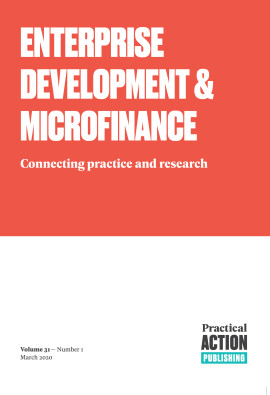The dasheen itch factor and approaches to reducing its effect
The ‘dasheen’ form of taro is a staple food grown in tropical regions all over the world. Although it is nutritionally superior to potato in a number of ways, it contains high levels of oxalates which cause itching when dasheen is handled, and can be dangerous when consumed. This article describes the treatments and options for processing dasheen which can reduce the oxalate levels and result in a variety of safe food products.Beyer, R. (2010) Cookbook: Taro Root [website], <http://en.wikibooks.org/wiki/Cookbook:Taro_Root≯ [accessed 11 October 2011]. http://en.wikibooks.org/wiki/Cookbook:Taro_Root
Njintang, Y.N., Mbofung, C.M.F., Abdoubouba, A., Aboubakar, Parker, M., Faulk, C., Smith, A., Graham, M., Bennett, R. and Waldron, W.K. (2003) ‘Major constraints associated with the use of taro (Colocasia esculenta) flour as raw material for the preparation of achu’, FoodAfrica International Working Meeting, Yaounde, Cameroon, 5-9 May 2003 [website], <foodafrica.nri.org/enterprises/enterprisesproceedings/42-njintang.doc≯ [accessed 11 October 2011]. foodafrica.nri.org/enterprises/enterprisesproceedings/42-njintang.doc
Noonan, S.C. and Savage, G.P. (1999) ‘Oxalate content of foods and its effect on humans’, Asia Pacific Journal of Clinical Nutrition 8: 64-74.
Pham SyTiep, Nguyen Van Luc and Dang Hoang Bien (2005) ‘Processing and use of Alocasia macrorrhiza (taro) roots for fattening pigs under mountainous village conditions’, National Institute of Animal Husbandry, Hanoi, Vietnam, Workshop-seminar, Making Better Use of Local Feed Resources, 23-25 May 2005, MEKARN-CTU [website] <www.mekarn.org/proctu/tiep44.htm≯ [accessed 11 October 2011]. www.mekarn.org/proctu/tiep44.htm
Beyer, R. (2010) Cookbook: Taro Root [website], <http://en.wikibooks.org/wiki/Cookbook:Taro_Root≯ [accessed 11 October 2011]. http://en.wikibooks.org/wiki/Cookbook:Taro_Root
Njintang, Y.N., Mbofung, C.M.F., Abdoubouba, A., Aboubakar, Parker, M., Faulk, C., Smith, A., Graham, M., Bennett, R. and Waldron, W.K. (2003) ‘Major constraints associated with the use of taro (Colocasia esculenta) flour as raw material for the preparation of achu’, FoodAfrica International Working Meeting, Yaounde, Cameroon, 5-9 May 2003 [website], <foodafrica.nri.org/enterprises/enterprisesproceedings/42-njintang.doc≯ [accessed 11 October 2011]. foodafrica.nri.org/enterprises/enterprisesproceedings/42-njintang.doc
Noonan, S.C. and Savage, G.P. (1999) ‘Oxalate content of foods and its effect on humans’, Asia Pacific Journal of Clinical Nutrition 8: 64-74.
Pham SyTiep, Nguyen Van Luc and Dang Hoang Bien (2005) ‘Processing and use of Alocasia macrorrhiza (taro) roots for fattening pigs under mountainous village conditions’, National Institute of Animal Husbandry, Hanoi, Vietnam, Workshop-seminar, Making Better Use of Local Feed Resources, 23-25 May 2005, MEKARN-CTU [website] <www.mekarn.org/proctu/tiep44.htm≯ [accessed 11 October 2011]. www.mekarn.org/proctu/tiep44.htm
Beyer, R. (2010) Cookbook: Taro Root [website], <http://en.wikibooks.org/wiki/Cookbook:Taro_Root≯ [accessed 11 October 2011]. http://en.wikibooks.org/wiki/Cookbook:Taro_Root
Njintang, Y.N., Mbofung, C.M.F., Abdoubouba, A., Aboubakar, Parker, M., Faulk, C., Smith, A., Graham, M., Bennett, R. and Waldron, W.K. (2003) ‘Major constraints associated with the use of taro (Colocasia esculenta) flour as raw material for the preparation of achu’, FoodAfrica International Working Meeting, Yaounde, Cameroon, 5-9 May 2003 [website], <foodafrica.nri.org/enterprises/enterprisesproceedings/42-njintang.doc≯ [accessed 11 October 2011]. foodafrica.nri.org/enterprises/enterprisesproceedings/42-njintang.doc
Noonan, S.C. and Savage, G.P. (1999) ‘Oxalate content of foods and its effect on humans’, Asia Pacific Journal of Clinical Nutrition 8: 64-74.
Pham SyTiep, Nguyen Van Luc and Dang Hoang Bien (2005) ‘Processing and use of Alocasia macrorrhiza (taro) roots for fattening pigs under mountainous village conditions’, National Institute of Animal Husbandry, Hanoi, Vietnam, Workshop-seminar, Making Better Use of Local Feed Resources, 23-25 May 2005, MEKARN-CTU [website] <www.mekarn.org/proctu/tiep44.htm≯ [accessed 11 October 2011]. www.mekarn.org/proctu/tiep44.htm
Beyer, R. (2010) Cookbook: Taro Root [website], <http://en.wikibooks.org/wiki/Cookbook:Taro_Root≯ [accessed 11 October 2011]. http://en.wikibooks.org/wiki/Cookbook:Taro_Root
Njintang, Y.N., Mbofung, C.M.F., Abdoubouba, A., Aboubakar, Parker, M., Faulk, C., Smith, A., Graham, M., Bennett, R. and Waldron, W.K. (2003) ‘Major constraints associated with the use of taro (Colocasia esculenta) flour as raw material for the preparation of achu’, FoodAfrica International Working Meeting, Yaounde, Cameroon, 5-9 May 2003 [website], <foodafrica.nri.org/enterprises/enterprisesproceedings/42-njintang.doc≯ [accessed 11 October 2011]. foodafrica.nri.org/enterprises/enterprisesproceedings/42-njintang.doc
Noonan, S.C. and Savage, G.P. (1999) ‘Oxalate content of foods and its effect on humans’, Asia Pacific Journal of Clinical Nutrition 8: 64-74.
Pham SyTiep, Nguyen Van Luc and Dang Hoang Bien (2005) ‘Processing and use of Alocasia macrorrhiza (taro) roots for fattening pigs under mountainous village conditions’, National Institute of Animal Husbandry, Hanoi, Vietnam, Workshop-seminar, Making Better Use of Local Feed Resources, 23-25 May 2005, MEKARN-CTU [website] <www.mekarn.org/proctu/tiep44.htm≯ [accessed 11 October 2011]. www.mekarn.org/proctu/tiep44.htm
- Design, construction, and performance evaluation of an innovative cassava peeling machine
- Insects in the human food chain: global status and opportunities
- COVID-19, seed security and social differentiation: when it rains, it pours
- Kenkey production, vending, and consumption practices in Ghana
- Support for small-scale food processors in developing countries in a changing global food supply


